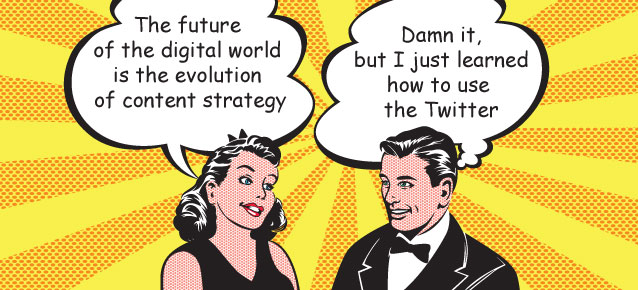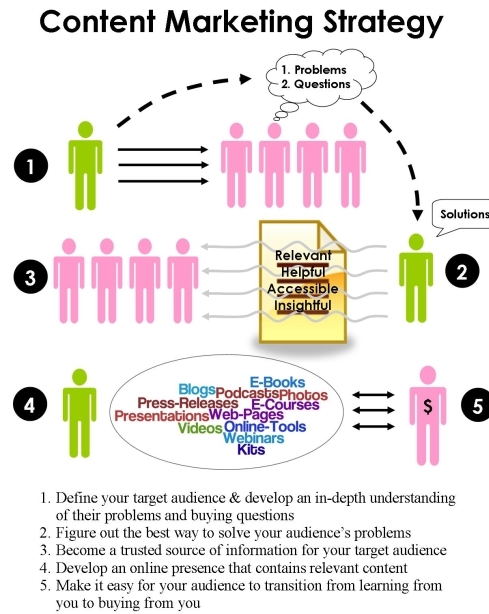Canvasing Successful Content Strategies 2:

Welcome back to Ashop’s 2-part post series on putting together a successful content strategy. Last time we asked the question: what is content strategy, and what are some of the research intricadies involved? Today we’ll continue to discuss research, but we’ll also talk about the meat of your project: content development, distribution, and scheduling. So let’s hop right in and figure out how to turn insights from your market research into money in your pocket.
Take Stock of Your Assets:
After taking a thorough look at your target audience, the next thing you need to do is take an inventory of your own assets. Do you have some white papers? Some online tutorials? A few sales letters? What exactly have you offered so far in terms of content? And in what mediums? Did you get any positive feedback from these early attempts? Any negative feedback?
You need to get a blank sheet of paper and write down as many questions for yourself as you can possibly think of. Write down questions until your brain is dead and your hand is aching. Then start answering them.
Don’t feel like this is a task you have to tackle alone. A content strategy is a collaborative effort that needs to be handled by a team of people who’ve got a direct hand in any of the campaigns that are involved. You’ve got employees, so use them.
If you don’t have employees, then check into some of the outside contractors that are available for a variety of marketing related services. Market research is a booming field and there are entire firms of content strategists dedicated to helping you meet your marketing objectives. A few good places to look are The Warrior Forum, oDesk.com, and WickedFire.
Speaking of the marketplace, one thing you’ll really need to do is research your competition. You need to find out where they are finding their customers, how they are engaging with them, and most importantly, you should find out what kind of content they’re using. If you can find a type of content that they’re lacking, you can gain a significant competitive edge.
For example, say your competition is doing well with a newsletter, a blog, and a few eBooks that they give out for free in exchange for contact information. Perhaps you also notice that they don’t have any video media at all. This could be an opportunity for you to develop a series of helpful video tutorials. You can really use this opportunity to one-up your opposition.
If you’re providing more media at a higher level of entertainment and expertise, you're sure to snag some stray conversions from your competitors.
Planning Your Content Development:

After you’ve finally conducted all of your research, you can begin the next phase of your content strategy: planning. This is the nitty-gritty of your content strategy. You’re deciding exactly what you’re going to do in order to meet your marketing objectives. To begin with, you’ll have to refer back to your research and find out where the holes in your own inventory are, as well as those in your competition’s content. Use these insights to inform your next course of action, which will be deciding what kind of media you’ll be distributing.
This again comes down to asking questions. Are you planning on using long form sales letters? Videos? Emails? How many different kinds of media are you looking to put out there? The options range quite widely, and some might work better than others depending on who you’re targeting.
Here’s a basic pointer, you’ll want to have an opt-in page that’s search engine optimized for sure. Do your best to market this page well. Advertise it in email blasts, on your home page, across social media; at least make sure there’s a link to it in most of the materials you release. This page is where you’ll aim to convert most of your leads, so spend some time developing it and connecting it to various sales funnels.
Since we’re on the subject of sales funnels, now would be a good time to start thinking about distribution. Any content strategist worth their salt needs to know where the best spots to deliver content to their customers will be.
Everything should link back to your website, and eventually to your opt-in page. The main goal here is always to gain conversions, so make sure there’s an easily identifiable method for anyone examining your content to purchase your product or service.
Next, go back to your research and find out where your customers and potential customers are the most active online. You’ll want to market there. This could be on a social media platform, YouTube, search engines (via PPC advertising), email, and much more. Decide on the most appropriate paths of distribution based on your goals for that particular piece of content. If you’ve done your research correctly, you should have a good idea of where your customers are spending most of their time online.
Scheduling a Strategy:
The next thing you’ll need to do is set up a schedule. Put together an extremely detailed calendar. Beyond just having the date, you’ll need to include what kind of content you’re working on, the title of said content, where you’ll distribute it, when you plan on distributing it, what keywords this content will target, and what the goals for this particular material are (gain conversions, build buzz, etc.)
After you’ve put this calendar together you need to share it with anyone involved in the project. It should be a document stored on a cloud platform. This way you or anyone else with the need to do so can access and edit it from anywhere. With universal location access, you can make any adjustments required to your content strategy on the fly, without having to waste time micromanaging.
Once this calendar is done, you’re basically all set to do the actual work. All you’ll need to do is carry out the orders that you’ve created for yourself. In other words, you just have to follow your strategy. Stick to the plan and all should be well. If you do the homework on this thing ahead of time, most of your content should write itself. You’ll know the niche inside and out, and you’ll have all the tools you need to succeed.
So don’t skimp on the research, and schedule every tiny detail. If for some reason, things don’t go according to plan, go back to the beginning and figure out where you went wrong. There’s always room for improvement, so don’t feel like you have to stick to the same template. Experiment and have fun with your strategy. After all, if you’re not having fun, then what good is all that money you’re making?














Comment(s)0